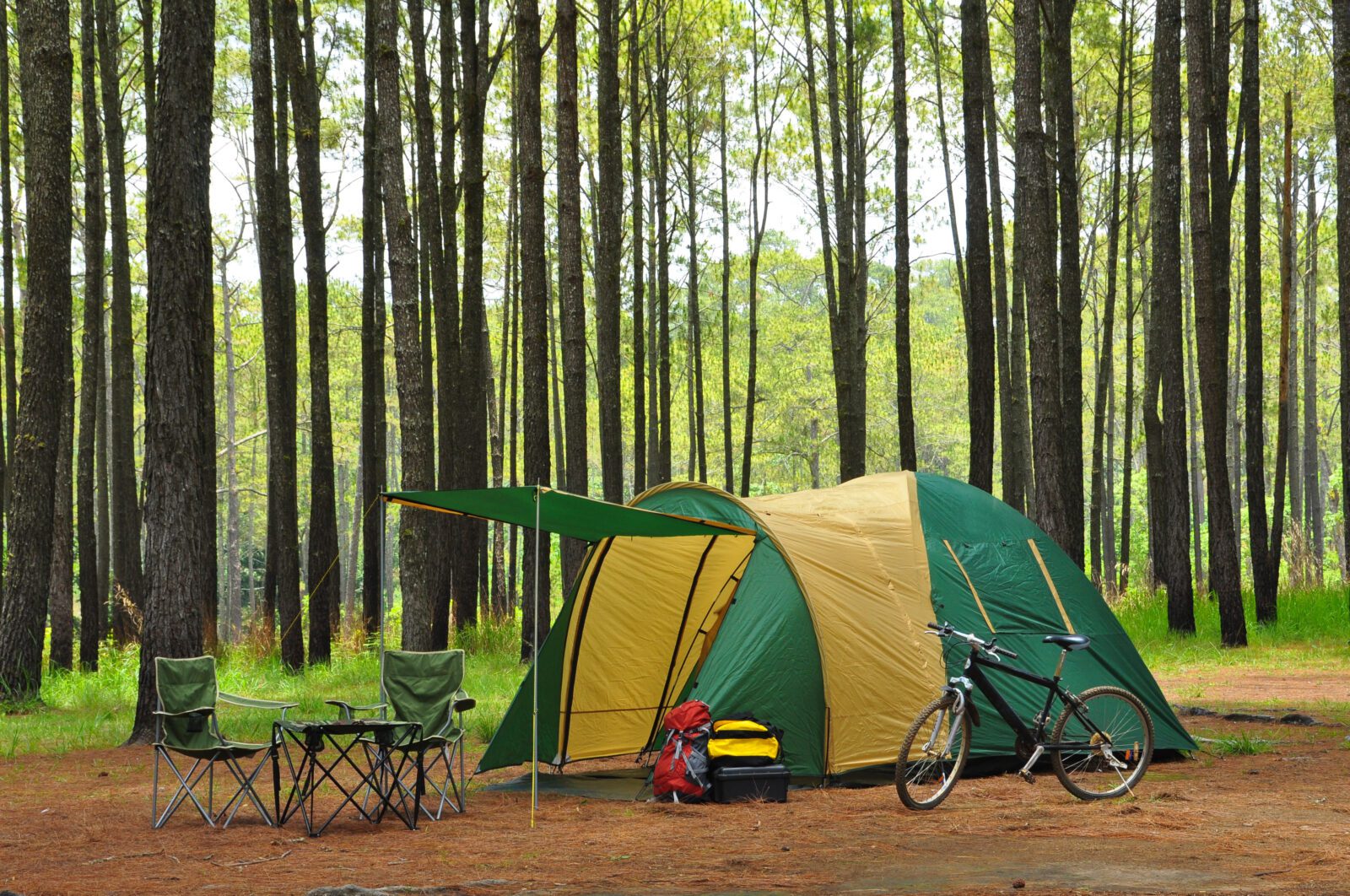We’ve all been there.
You’ve finally snuggled up in your sleeping bag after a long day of hiking in the rain for a restful night’s sleep. But, as soon as you’re tucked into bed, you feel a steady drip, drip, drip of water leaking from your 2 person tent.
If only there was a way to re-waterproof your tent.
The good news? There is.
We know how important it is to have a reliable shelter while camping in foul weather. So, in this article, we’ll talk you through the process of how to re-waterproof a tent to help ensure that all your future camping trips go off without a hitch.
Page Contents
Why you need to re-waterproof a tent?
If you’ve never had to re-waterproof a tent before, you may be wondering why you should even spend time re-waterproofing for your shelter.
In reality, a tent is supposed to already be waterproof, right?
Well, it turns out that tents tend to lose their weather resistance over time, so re-waterproofing your shelter on a regular basis is of the utmost importance. In particular, there are a few key reasons why you need to re-waterproof your tent before your next adventure, these include:
- Improved weather resistance in foul weather. As you can probably imagine, the primary reason why most people choose to re-waterproof their shelter, be that a glamping tent or a 4 person tent, is to help keep them dry in foul weather. Indeed, if you don’t waterproof your tent, you might find that your sleeping bag and sleeping pad will be a bit soggy after an evening of camping in a rainy Olympic National Park.
- Increased breathability in humid conditions. While re-waterproofing a tent is primarily about protecting yourself from wet, rainy conditions, doing so can also help you stay cool and comfortable in muggy locales. In fact, since the DWR treatment that we often apply to tents causes water to bead off the side of the tent fly, it can prevent water from clogging up the pores of the tent fabric, increasing breathability in the process. That means you can enjoy better breathability at night and less condensation in your tent each morning.
- Added longevity for your tent. Finally, taking the time to re-waterproof your tent can help ensure that it stays in good working condition for as long as possible. The process of re-waterproofing a tent helps protect it from the elements, too, so maintaining your shelter on a regular basis can help you get the most out of your gear.
What is needed to seal the seams?
Before we dive into the nitty-gritty details of how to re-waterproof a tent, let’s first take a quick look at the equipment you’ll need to do so properly.
If you want to reseal the seams on your tent and refresh your shelter’s DWR coating before your next trip to Yosemite, here’s what you’ll need :
- Your tent
- A tube of seam sealer
- Bottle of spray-on water repellent
- Rubbing alcohol
- Clean cloths
- Water
Do keep in mind that your tent should be as clean as possible before you start the re-waterproofing process. Therefore, you may want to rinse your shelter off with water mixed with mild detergent. Then, you can hang it up to dry for a couple of days to get it ready for waterproofing.
How to seal the seams
The first step in re-waterproofing your tent is to reseal its seams. Resealing a tent’s seams is a vital part of the gear maintenance process because the seams are the weak point in any shelter, especially during stormy conditions in Shenandoah National Park.
In fact, if you’re experiencing a steady drip of water from one part of your tent at night, leaky seams are likely to blame. Thankfully, solving this problem is fairly straightforward.
What is needed
To re-seal the seams of your tent, you’ll need the following items :
- 1 to 2 old cloths or rags
- A tube of seam sealer
- Rubbing alcohol
Steps to seal the seams on a tent
Once you have all the gear you need to seal the seams on your tent, it’s time to get started.
- Unfold your tent’s rainfly on the floor in a bright room or on the ground outside. Place the rainfly on the floor so that the inside of the rainfly is facing up.
- Inspect the seams of the tent to find any sections where the old seam tape or seam sealer has started to peel off. If you find any peeling sections, gently remove them from your tent.
- Take a rag and dampen it with a small amount of rubbing alcohol.
- Use the rag to gently clean all of the seams of your rainfly and remove any grease or debris.
- Open the tube of the seam sealer and follow the manufacturer’s instructions for applying it to a tent. You will normally need to use the included brush to carefully brush on some seam sealer onto all of your rainfly’s seams.
- Leave your rainfly where it is for a few hours until the seam sealer completely dries.
- Repeat steps 1 to 6 for your tent’s bathtub-style floor as needed to completely waterproof your shelter.
How to refresh the DWR layer
Once you’ve re-sealed the seams on your tent, it’s time to refresh your shelter’s DWR layer.
DWR, or durable water repellent, is a type of chemical that’s used on everything from the rainfly of 8 person tents to the outer fabric of rain jackets and rain pants.
This chemical helps encourage water to bead off the surface of a fabric instead of soaking through. As a result, it allows your tent or clothing to be more breathable in hot and humid conditions at places like Great Smoky Mountains National Park.
This DWR coating will eventually wear away, though, so you’ll need to refresh it from time to time.
What is needed
Before you start the DWR refreshing process, you’ll need a few pieces of equipment, including :
- 1 to 2 old cloths or rags
- Water
- Spray-on water-repellent
Steps to refresh the DWR layer on a tent
As soon as you have all of your equipment ready to go, it’s time to start refreshing the DWR layer on your tent’s rainfly.
To do so, you’ll follow these steps :
- Set up your tent outside in your backyard or in another private outdoor space.
- Follow your manufacturer’s instructions to apply the waterproofing spray to your tent’s rainfly. Normally, this involves applying an even coating of the spray to the outer layer of your tent’s rainfly.
- Wait a few minutes for the DWR to dry.
- Dampen a cloth with a bit of water.
- Use the cloth to wipe off any excess DWR coating on your tent.
- Wait a few hours for your tent to completely dry before you pack it away for your next adventure.
Do note, however, that you should only reapply DWR to the outer fabric of your tent’s rainfly. Since this treatment is designed to help water bead off the surface of a fabric in rainy weather, there’s no reason to apply it to your tent’s mesh canopy or your tent floor.
Gaby Pilson
Gaby is a professional mountain guide with a master’s degree in outdoor education. She works primarily in the polar regions as an expedition guide, though she can be found hiking, climbing, skiing, sailing, or paddling in some of the world’s most amazing places when not at work.
Recommended Reads :


